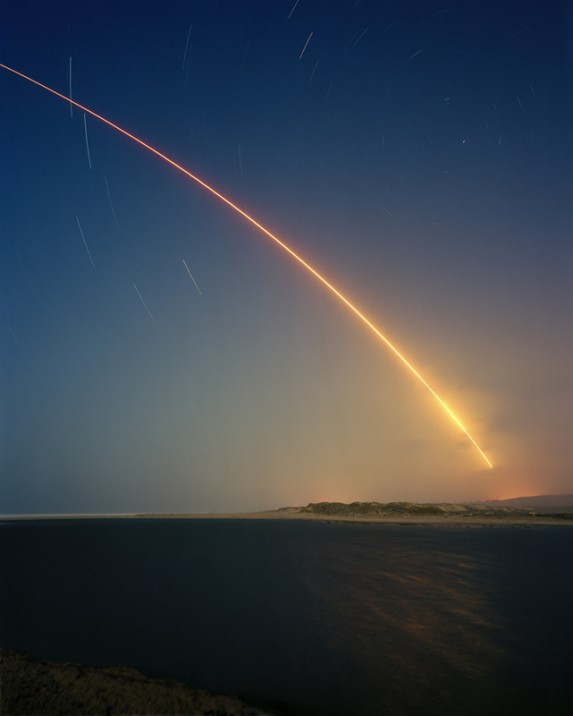
Full spectrum film captures visible and near infrared light, commonly referred to as "VNIR". Some digital cameras can detect some ultraviolet light and minimal amounts of the near infrared spectrum. However, most digital cameras contain a built in ifrared hot mirrot filter that blocks these kinds of lights. Replacing this filter with an infrared pass or a wide spectrally transmitting filter enables the photograph to detect the complete spectrum of light. This provides the avaliablility to take ultraviolet or infrared photography.Full spectrum photography is used for fine art photography, geology, forensice and law enforcement.

Full spectrum photography started in the 1950's and was used primarily for geological and militaries needs. In the 1990's, photographers began shooting photos in infrared with their digital cameras. Throughout the 2000's, full spectrum photography was used for a variety of things from forensic science to paranormal ghost hunting.

Full spectrum photography is commonly used for fine art photographs. Using full spectrum can enable the photographer to yeild colors that are siilar to visible color film but with an enhanced brightness of infrared. The large amount of full spectrum photography is landscapes and has recently begun to be used for portraits of people.

Full spectrum photograph is also used for forensics imaging. Forensic specialists use full specturm cameras to excentuate non visible materials which are more easily seen through ultraviolet and infrared lighting. The applications of these materials helps to reveal a variety of crime related substances, including non visible inks, disturbed soil, gun shot residue, body fluids, and fibers. In addition, full spectrum photography has been used to capture archelogical finds.

 Full spectrum film captures visible and near infrared light, commonly referred to as "VNIR". Some digital cameras can detect some ultraviolet light and minimal amounts of the near infrared spectrum. However, most digital cameras contain a built in ifrared hot mirrot filter that blocks these kinds of lights. Replacing this filter with an infrared pass or a wide spectrally transmitting filter enables the photograph to detect the complete spectrum of light. This provides the avaliablility to take ultraviolet or infrared photography.Full spectrum photography is used for fine art photography, geology, forensice and law enforcement.
Full spectrum film captures visible and near infrared light, commonly referred to as "VNIR". Some digital cameras can detect some ultraviolet light and minimal amounts of the near infrared spectrum. However, most digital cameras contain a built in ifrared hot mirrot filter that blocks these kinds of lights. Replacing this filter with an infrared pass or a wide spectrally transmitting filter enables the photograph to detect the complete spectrum of light. This provides the avaliablility to take ultraviolet or infrared photography.Full spectrum photography is used for fine art photography, geology, forensice and law enforcement. Full spectrum photography started in the 1950's and was used primarily for geological and militaries needs. In the 1990's, photographers began shooting photos in infrared with their digital cameras. Throughout the 2000's, full spectrum photography was used for a variety of things from forensic science to paranormal ghost hunting.
Full spectrum photography started in the 1950's and was used primarily for geological and militaries needs. In the 1990's, photographers began shooting photos in infrared with their digital cameras. Throughout the 2000's, full spectrum photography was used for a variety of things from forensic science to paranormal ghost hunting.  Full spectrum photography is commonly used for fine art photographs. Using full spectrum can enable the photographer to yeild colors that are siilar to visible color film but with an enhanced brightness of infrared. The large amount of full spectrum photography is landscapes and has recently begun to be used for portraits of people.
Full spectrum photography is commonly used for fine art photographs. Using full spectrum can enable the photographer to yeild colors that are siilar to visible color film but with an enhanced brightness of infrared. The large amount of full spectrum photography is landscapes and has recently begun to be used for portraits of people. Full spectrum photograph is also used for forensics imaging. Forensic specialists use full specturm cameras to excentuate non visible materials which are more easily seen through ultraviolet and infrared lighting. The applications of these materials helps to reveal a variety of crime related substances, including non visible inks, disturbed soil, gun shot residue, body fluids, and fibers. In addition, full spectrum photography has been used to capture archelogical finds.
Full spectrum photograph is also used for forensics imaging. Forensic specialists use full specturm cameras to excentuate non visible materials which are more easily seen through ultraviolet and infrared lighting. The applications of these materials helps to reveal a variety of crime related substances, including non visible inks, disturbed soil, gun shot residue, body fluids, and fibers. In addition, full spectrum photography has been used to capture archelogical finds.
No comments:
Post a Comment